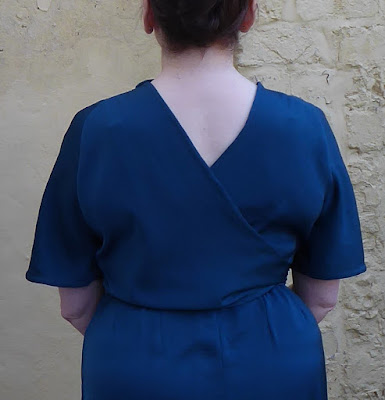To recap on my plan: I wanted to make a vintage-style skirt with a centre front pleat and a slight flare, to go with my new shoes.
 |
| Plans |
This was my starting point, but it was not my size and the skirt was straighter than I wanted.
 |
| Simplicity 2480, 1937 |
View 2 of this had a similar overall look, without the problems, so seemed like a better bet.
 |
| Style 2025, 1977 |
When I came to look at the pattern pieces, however, I discovered that the two patterns handle the centre pleat very differently. The Style pattern has the extra fabric for the pleat running the full length of the skirt, which seemed to me to add a lot of unnecessary bulk to the front.
 |
| There's a lot of fabric in that skirt front |
The Simplicity pattern uses a construction I've never come across before. The skirt front pieces have an extension for the pleat which folds back at the centre, and then a separate 'pleat underlay' forms the back of the pleat.
 |
| The skirt front folds along the dots, and the underlay is attached |
Of course, I wanted to try this out, so I drafted my own design using elements of both patterns. The skirt back is cut in a single piece and the zip is in the side seam, which is the Simplicity construction method.
The pattern is missing its instructions, but it was fairly easy to guess the skirt construction. I had made life harder for myself by choosing a fabric with a check in it, but I was able to match the two fronts and the pleat underlay.
 |
| Pinning the underlay in place, the chalk Ws are for 'wrong side' |
Stupidly, I cut the front with the red line at the centre and the back with the blue square at the centre, so the horizontal lines match at the side seams, but the vertical lines do not. I stabilized the curved zip opening with tape, and hand-picked the zip.
 |
| Pattern semi-matched, and the completed zip |
And that is as far as I've currently got. Tomorrow is forecast to be even hotter, so I might want to just stay indoors and sew!































